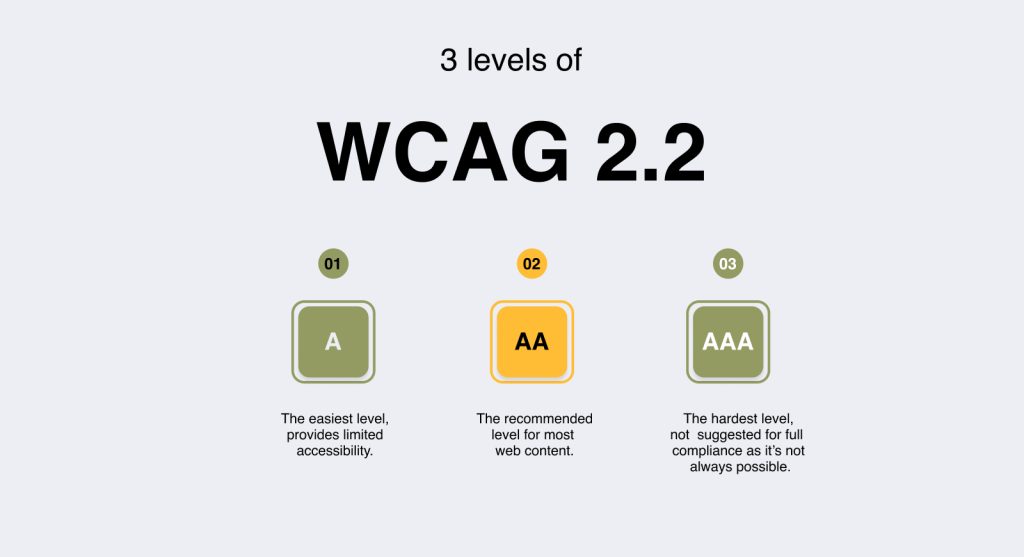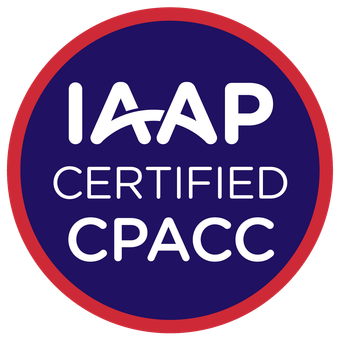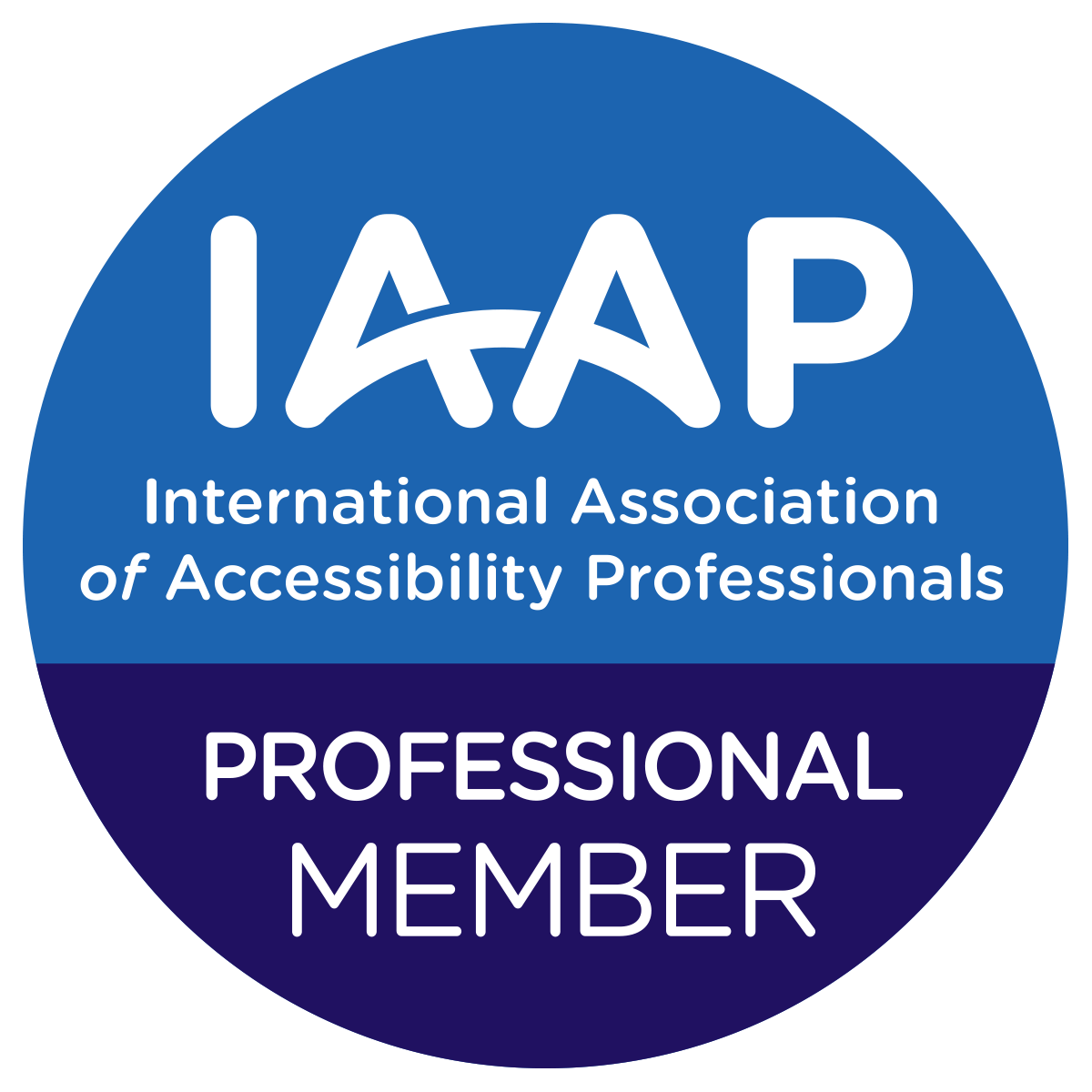In the digital age, ensuring that your website or application is accessible to everyone is more crucial than ever. The Web Content Accessibility Guidelines (WCAG) 2.2 are the latest standards to help you achieve that. Whether you’re a developer, designer, or content creator, adhering to these guidelines ensures that your digital content is inclusive and usable by people of all abilities.
What is WCAG 2.2?
The Web Content Accessibility Guidelines (WCAG) are a set of internationally recognised standards designed to make web content more accessible to people with disabilities. These documents are published by the World Wide Web Consortium. It is a standardised set of principles, guidelines, and success criteria, that developers, quality assurance engineers, content creators, and anyone building websites should follow to be conformant with the rules and meet at least the minimum required level of accessibility of their websites.
WCAG Principles
Web Content Accessibility Guidelines are structured into the following 4 main principles that tell us what the web content should be:
- Perceivable: Information and user interface elements should be presented in a manner that users can understand.
- Operable: Navigation and user interface components need to be fully functional.
- Understandable: The information and operation of the user interface must be crystal clear.
- Robust: Content must be robust enough to be consistently interpreted by a wide range of user agents, including assistive devices.

WCAG 2.2 Levels
Each principle of WCAG is divided into different guidelines and the purpose of guidelines is to provide grouping and understanding for success criteria. The success criteria determine compliance with WCAG, which means that to fulfil WCAG, the content must meet the success criteria. They explain how to make content more accessible. The success criteria need three stages of conformity, each with increasing difficulty:
- Level A – The minimum level of accessibility that a website must meet and is required for all websites. If the website does not meet level A accessibility standards, individuals with impairments may be unable to use it.
- Level AA – The Level AA criteria are recommended as the minimum to meet. Websites that meet AA standards are accessible to a broader number of users in various situations.
- Level AAA – Level AAA criteria indicate the highest WCAG conformance level. They may not be appropriate for many websites to meet because they typically need large resources for compliance. However, some of them are reasonably priced even for simple websites.

WCAG Guidelines Versions
Continuous revisions and new versions of WCAG ensure that accessibility requirements remain current with technology advancements. As a result, WCAG accessibility compliance criteria have changed over time, necessitating more advanced requirements with each subsequent edition.
WCAG 1.0
The original WCAG was published in May 1999. WCAG 1.0, which focused mostly on HTML, was the first major step towards digital inclusion.
WCAG 2.0
This version outlined the WCAG’s guiding principles, which are still used today. This version of the WCAG was released in December 2008. It was created to handle new technologies like as mobile phone apps and mobile-version websites.
WCAG 2.1
This version contained a considerable reworking of the previous standards and went into effect in June 2018. Since mobile devices have become the norm among internet users, accessibility on mobile browsers such as smartphones, tablets, and smartwatches has become a new standard.
WCAG 2.2
WCAG 2.2 was released in October 2023 as an update to WCAG 2.1. This version introduces 9 new criteria to the existing guidelines for levels A, AA, and AAA. WCAG 2.2 improves digital accessibility by making it easier to integrate new technologies and devices while also increasing inclusion.
Why Should You Care About WCAG 2.2?
Ensuring that your website or digital content is accessible isn’t just a matter of compliance—it’s about creating a better experience for all users. Here’s why WCAG 2.2 should be on your radar:
1. Legal Compliance
Several countries have rules and regulations requiring that websites be accessible to individuals with disabilities. WCAG 2.2 is a recognised standard for accessibility, and meeting these guidelines can help you avoid legal challenges.
2. Inclusivity and Ethical Responsibility
Accessibility is fundamentally about inclusivity. By following WCAG 2.2, you ensure that your digital content is usable by everyone, including people with disabilities such as visual, auditory, cognitive, and motor impairments.
3. Improved User Experience
Accessible design often leads to a better overall user experience for everyone, not just those with disabilities. For example, captions on videos benefit people in noisy environments, and clear navigation structures help users find what they’re looking for more easily.
4. Broaden Your Audience
Approximately 15% of the world’s population is disabled. Ensuring your website is accessible allows you to reach a broader audience.
5. Better SEO
Search engines prioritise websites that offer a good user experience, which includes accessibility. Implementing WCAG 2.2 guidelines can improve your site’s SEO, helping it rank higher in search results.
What’s Inside the WCAG 2.2 Checklist?
Our WCAG 2.2 checklist is a comprehensive guide that covers all the essential checkpoints you need to meet for Levels A, AA, and AAA. The checklist is available in PDF and XLS formats, making it easy to use whether you prefer a digital or print copy.
- PDF Version: Perfect for a quick reference or sharing with team members during meetings or reviews.
- XLS Version: Ideal for tracking progress, assigning tasks, and ensuring that all accessibility requirements are met across your project.
Key Features of Our Checklist
- User-Friendly Layout: The checklist is organised by WCAG level, making it easy to navigate and understand.
- Detailed Guidelines: Each checkpoint is explained in detail.
- Actionable Steps: The checklist provides clear, actionable steps to ensure your website or app meets each WCAG 2.2 requirement.
How to Use the Checklist?
1. Download: Get your free copy of the WCAG 2.2 checklist in PDF or XLS format by clicking the links below.
WCAG 2.2 Checklist (PDF) WCAG 2.2 Checklist (XLS File)2. Assess: Use the checklist to evaluate your current website or application and identify areas that need improvement.
3. Implement: Follow the actionable steps to address any accessibility issues.
4. Review: Regularly review your site against the checklist to ensure ongoing compliance, especially as new content is added.
My Final Thoughts
Accessibility is more than a legal responsibility. It’s a promise of inclusivity and user experience (UX). By using our free WCAG 2.2 checklist, you’re taking an important step towards making the web a more accessible place for everyone.
Feel free to share this checklist with your team, clients, and anyone else involved in the development process. Together, we can build a digital world in which everyone has equal access to knowledge and resources.
Our team of auditors holds IAAP certification and proudly maintains membership in the International Association of Accessibility Professionals, ensuring they are equipped with the highest standards of expertise in accessibility. If you have any questions or need assistance with accessibility solutions, Contact Sweans today to arrange a personalised consultation.


As a Quality Engineer with a year of experience, I am passionate about delivering high-quality products and specialize in web accessibility. I have strong expertise in WCAG guidelines, ADA compliance, and accessibility testing tools, as well as best practices for creating compliant digital solutions.







